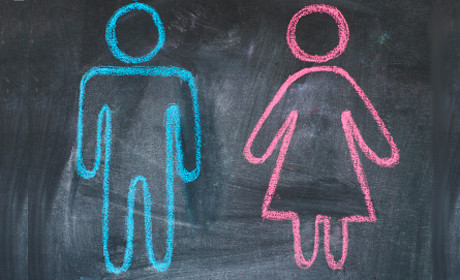
The Creative Diversity Network has been collaborating with the BBC, Channel 4, ITV and Sky News on Diamond, a new initiative for monitoring on and off-screen diversity in the media industry.
The ongoing project, which is set to launch in the coming months, will collate data about who commissions television programmes in the UK, and the people who appear in them.
Amanda Ariss, executive director of the Creative Diversity Network, said one of Diamond’s goals is to “look at what TV looks like from the viewers’ perspective”, speaking on a panel at City University’s Women on Air conference in London today (19 May).
“We will look at diversity from a number of different angles, including gender, age and disability.
“For example, the diversity characteristics of an actor playing a role in Coronation Street might be very different to those of the character he’s portraying.”
It’s important for the broadcasters, who are the people essentially turning on the light on this, to also be in the spotlight for the decisions they makeAmanda Ariss, Creative Diversity Network
This information will be collected each time one of the broadcasters involved commissions a programme, and it will be made available online.
The public will be able to analyse the data by broadcaster, programme genre, air time and job role, so “we’ll be able to track whether there’s any change in the industry”.
Ariss said the network is currently working on a pilot prototype of the project looking at news, so data about diversity in news will be available soon after Diamond’s launch.
“It will show us the whole picture, not just women or just people with disabilities.
“But it’s not a magic wand – you can gather as much data as you want but if you don’t use it, it doesn’t mean anything."
The broadcasters have signed up to the project voluntarily, and more are expected to come on board soon, even though Ariss pointed out it is unusual for the main competitors in an industry to subject themselves to this type of monitoring and also agree for the results to be made public.
“It’s important for the broadcasters, who are the people essentially turning on the light on this, to also be in the spotlight for the decisions they make.”
The discussion also explored the reasons why it is a common belief that women in the media are less likely to “put their heads above the parapet”.
Ronke Phillips, senior correspondent at ITV London News, said women do put their heads above the parapet, but this perception is related to what she called the “newsroom pyramid”.
“At the bottom of the pyramid, you have more women than men entering the profession, but by the time you get to the top, it’s the other way around,” Phillips added.
She pointed out the issue of women achieving leadership positions but still being paid less than men in similar roles is not an incentive for female journalists in the industry.
“And why aren’t we willing to tell each other what we’re earning? While we keep being secretive about pay, we will never get equal pay.”
Findings from the 2015 Global Media Monitoring Project presented at the event earlier in the day also showed that women’s presence in the news as sources who talk about their personal experiences increased to 38 per cent last year from 31 per cent in 2005.
But the number of women featured as experts or news commentators has only grown by two per cent in the same period – to 19 per cent in 2015 from 17 per cent in 2005.
At #womenonair, prof Karen Ross presents findings from the Global Media Monitoring Project on gender representation pic.twitter.com/ORUHiOe0F5
— Mădălina Ciobanu (@madalinacrc) May 19, 2016
Doctor Emily Grossman, an expert in molecular biology and genetics, shared what she has learned from her experience appearing in media interviews and programmes.
She said women worry about the “impostor syndrome,” which means they are afraid of being portrayed as experts in the news because they are not at the top of the ladder or a pioneer in their field.
“Sometimes outlets don’t realise they can feature a woman who for example, has a degree in physics but is not a pioneer in the field, or even the author of a research being discussed.
“If she knows more about the topic than the public and has an ability and the confidence to explain it properly, that’s more important than being the top person in her field,” Grossman said.
“Women need more support, training and encouragement to understand that it’s OK not to know everything, as long as they know enough and are able to communicate it well.”
Free daily newsletter
If you like our news and feature articles, you can sign up to receive our free daily (Mon-Fri) email newsletter (mobile friendly).
Related articles
- How journalists can cover LGBTQ+ stories, with Enrique Anarte Lazo of Context
- Understanding and serving the neurodiverse community, with Nick Ransom
- Coverage of women: America is failing. The world is stalling
- 20 trailblazing women in journalism
- How to listen to people who avoid the news, with Shirish Kulkarni, Abdi Yusuf and Rhiannon White











